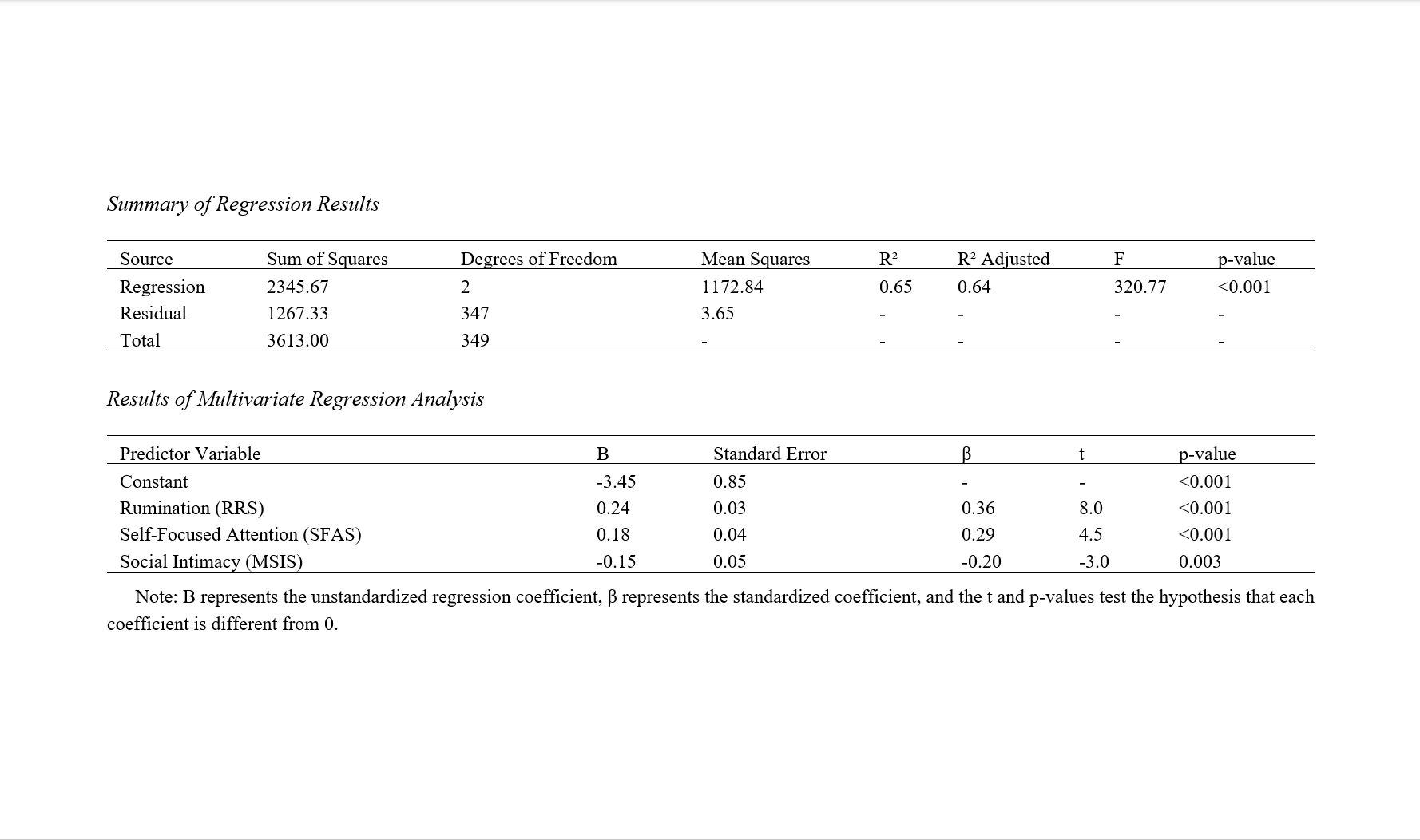Prediction of Social Anxiety based on Rumination, Self-Focused Attention, and Social Intimacy in Women
Keywords:
Social Anxiety, Rumination, Self-Focused Attention, Social Intimacy, WomenAbstract
Objective: This study aimed to investigate the predictive relationships between social anxiety and the psychological constructs of rumination, self-focused attention, and social intimacy among women. Specifically, it sought to determine how these variables influence the levels of social anxiety in a female population.
Method: A cross-sectional design was utilized, with a sample size of 350 female participants determined by Morgan and Krejcie's table. Standardized measurement tools were employed, including the Liebowitz Social Anxiety Scale (LSAS) for social anxiety, the Ruminative Responses Scale (RRS) for rumination, the Self-Focused Attention Scale (SFAS) for self-focused attention, and the Miller Social Intimacy Scale (MSIS) for social intimacy. Statistical analyses included descriptive statistics, Pearson correlation, and multiple linear regression, conducted using SPSS version 27.
Findings: Descriptive statistics showed mean scores of 45.23 (SD = 11.56) for social anxiety, 52.14 (SD = 12.75) for rumination, 30.56 (SD = 8.49) for self-focused attention, and 40.85 (SD = 9.22) for social intimacy. Pearson correlations revealed significant relationships between social anxiety and rumination (r = 0.61, p < 0.001), self-focused attention (r = 0.58, p < 0.001), and social intimacy (r = -0.49, p < 0.001). The regression model was highly significant (F = 320.77, p < 0.001), explaining 65% of the variance in social anxiety (R² = 0.65, R² adjusted = 0.64).
Conclusion: The study confirmed that rumination and self-focused attention significantly predict social anxiety, with social intimacy showing a protective effect. These findings underscore the importance of addressing cognitive patterns and enhancing interpersonal relationships in interventions aimed at reducing social anxiety among women.
Downloads

Downloads
Additional Files
Published
Submitted
Revised
Accepted
Issue
Section
License
Copyright (c) 2024 Fatemeh Ebrahimpour Khartoomi (Author); Azam Ghanbari (Corresponding Author); Nastaran Kazemian Tarhan (Author)

This work is licensed under a Creative Commons Attribution-NonCommercial 4.0 International License.






















